
This article looks at how to personalize learning for secondary students.
- Subject:
- Education
- Material Type:
- Primary Source
- Author:
- About Noah Dougherty
- Education Elements
- Noah Dougherty
- Date Added:
- 08/19/2019
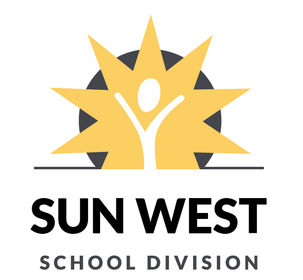
Sun West endorsed resources.
Sun West endorsed resources.

This article looks at how to personalize learning for secondary students.
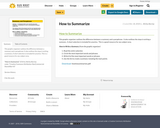
This graphic organizer outlines the difference between a summary and a paraphrase. It also outlines the steps in writing a summary. A short selection is included for practice. This is a good resource for any subject area.
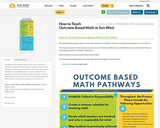
The following info-graphic spells out the steps required to establish a solid outcome based math program at your school!
The steps are given, but the resources you use are up to what is available at your individual school, as well as what fits your teaching style and your students' needs best.
Many resources can also be find in the resource bank!
Join the Outcome Based Math Group for more ideas and support in your journey!

During the 2019-2020 Professional Learning Communities in Sun West, the Early Learning/Phonological Awareness PLC created this recourse to help Teachers in their ELA programming with an overview of learning to read.
This continuum may also be helpful to parents, Educational Assistants, and other people in a student's educational team!

During the 2019-2020 Professional Learning Communities in Sun West, the Early Learning/Phonological Awareness PLC created this recourse to help Teachers in their ELA programming with an overview of learning to read.This continuum may also be helpful to parents, Educational Assistants, and other people in a student's educational team!Find the resource and a short webinar on how to use the resource here.

This information could also be applied to student book clubs.
A great read full of great ideas!
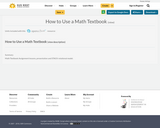
Math Textbook Assignment lessons, presentation and STACK rotational model.

Scientists require interaction and teamwork to do their jobs, so it’s important to build that kind of culture with every student in the science classroom. This can be done by:
1. Creating a safe, equitable space.
2. Connecting to humans in the real world.
3. Integrating other disciplines.
4. Supporting the development of interpersonal skills.
In this article, you will find access to "Science Connections: The Podcast" as well as an infographic that will help to inspire the next generation of scientific innovators.

This short video from CBC talks about how to talk about Indigenous people in Canada.

7 Short videos from Clever Academy will walk you through what you need to know to get started with Clever (about 16 minutes total).
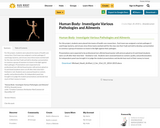
For this project, students were placed into teams of health care researchers. Each team was assigned a certain pathogen (I used fungi, bacteria, and viruses since three teams worked well for the class size that I had) and told to develop a presentation to convince a group of investors to invest in the fight against their pathogen.
Presentations were expected to be professional (not a Bristol board poster with pictures glued on it) and timed (students were cut off after their time limit – finished or not). Students were assessed based on content, quality, and professionalism. An independent panel was brought in to judge the student presentations and decide how much of their money to invest.
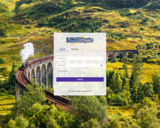
Lessons describe key functions of the human body systems.
(Sun West - this site will work automatically if you are in a school. You will require a username and password if accessing this off site. Refer to the "Accessing Resources at Sun West" document for this information.)

These activities for ages 11-16 explore the human impact of the climate emergency and provide new spaces, approaches and opportunities for climate education and social action.
This resource frames the climate emergency as a human rights and people-centered issue and supports teachers to promote a sense of agency and empowerment within young people.
This in turn is recognized as one strategy to help young people manage eco-anxiety, as well as disillusionment and disengagement with climate issues.
The resource includes five activities:
Activity 1 - Climate change, human rights and equality - An activity to introduce the links between climate change and human rights
Activity 2 - Climate justice - A mystery activity to demonstrate the inequalities inherent in the global interconnectedness of climate change. All people are affected in some way by the climate emergency but who you are and where you are in the world matters
Activity 3 – Critically thinking about evidence -An activity to examine case study films and make conclusions about which human rights are most threatened by climate change, which groups in society are most affected and what the solutions are.
Activity 4 – A climate consequences wheel - A consequences wheel activity using evidence from one case study film to make inferences about the different impacts of climate change on members of a community with different personal characteristics (for example: male or female).
Activity 5 – The climate game - A role play activity for which a clear space, either indoors or outdoors, is required. Learners compare the impacts of climate change on people from different backgrounds and in different circumstances. For some participants, the impacts of climate change overlap and are amplified. This strengthens learners’ understanding of intersectionality (interconnectedness).

Through traditional ecological knowledge and ocean navigation, understand how the indigenous peoples around the world succeeded on their lands well before modern science and technology were invented. Compare this knowledge to modern ocean navigation by diving head first into the Volvo Ocean Race, a sailing race across the globe with sustainability at its heart. Discover the incredible things which all peoples are able to accomplish through their understanding of place, nature, and the ocean.

If being alive on Earth were a contest, humans would win it hands down. We're like the Michael Phelps of being alive, but with 250,000 times more gold medals. Today Hank is here to tell us the specifics of why and how human population growth has happened over the past hundred and fifty years or so, and how those specifics relate to ecology.

In which Stan Muller subs for John Green and teaches you about energy and humanity. Today we discuss the ideas put forth by Alfred Crosby in his book, Children of the Sun. Historically, almost all of the energy that humans use has been directly or indirectly generated by the sun, whether that be food energy from plants, wind energy, direct solar energy, or fossil fuels. Stan looks into these different sources, and talks about how humanity will continue to use energy in the future as populations grow and energy resources become more scarce.

This is a YouTube video hosted by Kevin Gawletz, the Industry Education Co-ordinator, where he chats with Spencer Vandenburg about being a hunting and fishing guide. In the video Spencer outlines his journey as he has developed a successful career as a guide for hunting and fishing.

In this episode of Crash Course Kids, Sabrina talks about what properties are and how we can measure them to tell us more about an object.

Have you ever wondered what it would be like to live in an igloo?It would be pretty cold compared to the houses we live in now. Could you imagine living with over forty other people in one big house? Living with that many people would be like sharing a house with your whole class and all the teachers in your school!
The environment that we live in affects everything that we do. Canada is a country with a lot of different environments. There are parts of Canada where the temperature is freezing and all you can see is snow for most of the year. There are places where it rains a lot of the time and places where it is very dry. There are places that have mountains and some that are flat. There are rivers, lakes and oceans. Canada has a very diverse landscape.
In the past, First Nations were the only people living in Canada.They are the First Nations because they were the first occupants of North America. In Canada, each First Nation had to adapt to their environment in different ways. The houses they built, the food they ate, and the activities they did were all greatly affected by the environment they lived in.
Here you can look at three different aboriginal cultures from three different parts of Canada: the Huron, the Haida, and the Inuit. You can compare them to see how different their ways of life were because of where they lived.
Teaching resources available.

Hank introduces us to biogeochemical cycles by describing his two favorites: carbon and water. The hydrologic cycle describes how water moves on, above, and below the surface of the Earth, driven by energy supplied by the sun and wind. The carbon cycle does the same... for carbon!